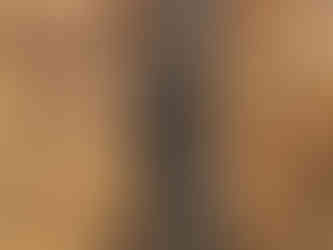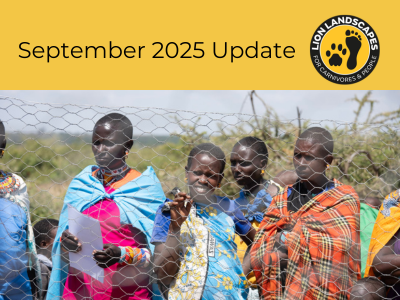Counting cats – insights from new Lion Landscapes research
- Paolo Strampelli & Charlotte E. Searle

- Mar 5, 2022
- 7 min read
Updated: Apr 23, 2024
For researchers, conservationists, and protected area managers, understanding the health and status of wildlife populations is essential. How can we tell if our activities are having an impact if we don’t know if our wildlife populations are increasing or decreasing? And how can we know if they are increasing or decreasing if we don’t know how many there were in the first place?
These may seem obvious questions, and you might think they have obvious answers. However, this is not the case. Counting animals has always been challenging – after all, they don’t respond to mail-in surveys, and they tend to have the unfortunate characteristic of not staying in one place for more than a few hours (if you’re lucky!). While most species present some challenges when it comes to population assessments (‘how many are there?’) and monitoring (‘how is this number changing over time?’), these difficulties are especially evident for large carnivores. Carnivores tend to be secretive, being mostly active at night, and to exist at naturally low densities and roam over large areas. As a result, it is often not possible to find enough of them to obtain a reliable population estimate by simply driving around. This is especially the case in areas where large carnivores are not used to tourist vehicles, or where they experience persecution by people (often as a result of human-carnivore conflict).
For many large carnivore species this issue has been circumvented by using camera traps, which take remotely triggered pictures when an animal passes in front of it. With camera traps, it doesn’t matter if animals are shy, scared of people, or exhibit any other characteristic which might make it difficult to approach them: if they pass in front of the camera, you have your pictures. As you may know, large carnivores such as tigers, jaguars, and leopards all have very distinct coat patterns. What you may not know is that – much like our own fingerprints – these are unique for each individual (Fig. 1), meaning that it is possible to identify animals at an individual level from camera trap pictures.

Figure 1 Three leopard pictures from Lion Landscapes' 2018 camera trap survey in Ruaha National Park. As we can see, leopard coat patterns allows us to clearly ‘match’ individuals from different photographs.
Once this is done – provided that enough cameras have been deployed, over a sufficiently large area, and that enough pictures have been recorded – it is possible to use statistical models (known as ‘capture-recapture’ models) to estimate the number of animals that have been missed by the cameras, and, consequently, the total number of animals in an area. However, instead of the total number of animals (‘population abundance’), researchers often like to estimate ‘population density’ (i.e. how many animals per – for example – 100 km2). This is because population density can be easily compared across areas, habitats, and land management strategies, regardless of how big the study areas are, making it more useful for management and research.
For individually identifiable species, such as those mentioned above, camera traps combined with capture-recapture models have become the standard technique employed to survey unstudied populations, and to monitor those which receive regular conservation attention. On the other hand, due to lions lacking such markings, the technique has until now been very rarely used for the species. Although alternative methods – which use the same statistical frameworks but rely on direct observations of lions – have been developed, these are less applicable to secretive and low-density lion populations in remote areas, such as those where Lion Landscapes mostly works.
However, in recent years there have been considerable advances in camera trap technology, including the development of ‘white’ (xenon) flash devices, which provide very clear colour pictures, even at night (Fig. 2). Since lions have unique ‘whisker spots’ on their faces, which can also be used as a sort of biometric ID, we wanted to test whether it would be possible to identify lions at an individual level from white flash camera trap pictures, and use these data to estimate lion population density.

Figure 2 A male lion photographed (‘captured’) in MBOMIPA WMA on one of our modern white-flash camera traps.
In 2018 and 2019, we deployed four semi-systematic camera trap grids, each comprising between 26-40 camera ‘stations’, each spaced between 2-5 km from each other. Each station comprised two camera traps, positioned on the opposite side of a road or trail in order to photograph both flanks. As lions – much like house cats – tend to always prefer the most comfortable option, they often travel by walking along roads or well-defined animal trails. Cameras were therefore placed on trees alongside these, at about 30-50 cm height, and 3-5 m from the centre of the road or trail (Fig. 3).
Figure 3 Cameras are placed on trees, facing towards the road or trail. Protective cases are used to protect the cameras from hyaena, lions, elephants, and – we were recently surprised to learn – even ground hornbills!
Each camera grid covered an area of between 150 and 550 km2, and was left out between 70 and 90 days. Two grids were deployed in two different habitats within Ruaha National Park (NP) – one in the core tourist area, near the Great Ruaha River, and one in miombo woodlands. In addition, we deployed a grid in MBOMIPA Widllife Management Area (WMA), a community-run buffer area between Ruaha NP and village lands, and one in Rungwa Game Reserve (GR), a primarily miombo woodland hunting area to the north of Ruaha (Fig. 4). By covering a range of habitat and management types, we wanted to determine whether the method was suitable to a diverse range of conditions, and how density estimates between the different sites compared.

Figure 4 The Ruaha-Rungwa conservation landscape (B), within the context of Tanzania’s protected area network (A). Insets 1-4: camera traps survey grids, and the main vegetation type of the area.
Once the cameras were taken down and the data sorted, we had two different researchers independently identify photographs of lions for two of the grids, to determine how reliably individual lions could be identified. We used a number of features in the identification process. As mentioned above, whisker spot patterns are unique, and these were the primary means of identification. As we placed cameras at a consistent distance from the road or trial, and at consistent angles, many pictures depicted whisker spots well enough for individual identification (Fig. 5).

Figure 5 Six different captures of lion from Ruaha, depicting three different individuals. Notice the distinct whisker spots, which allow the ‘matching’ of individuals from different photographs. The top and bottom row proved particularly useful.
We also found scars & marks to be a very useful features. The majority of lions photographed had at least one clear scar or mark, with most having multiple (Fig. 6). While most of these signs will fade over time, they allowed us to match lions where pictures of whisker spots were not as clear. We also noted that most individuals picked up new scars and marks throughout the study period, meaning that at most times there was at least one that helped us to identify the animals.

Figure 6 Two examples of scars or marks used to facilitate individual identification. This female (below) actually have several such signs (may require magnification!), which allowed us to identify her even when whisker spots were not very clear (as is the case in the last picture)
Overall, for most individuals, a combination of whisker spots and scars or marks were the primary characteristics used for identification (Fig. 7).

Figure 7 For most lions, a combination of whisker spots and distinctive scars or marks were used for identification
In addition, a number of supplementary features were used to speed up identification. Mane size and shape was very useful for males: Fig. 8 shows all the nine male lions captured in the MBOMIPA WMA grid: as can be seen, a quick glance at the mane would allow us to immediately exclude some individuals from the identification process, considerably speeding this up.

Figure 8 All male lions photographed in the MBOMIPA grid. The variation in mane size, colour, and shape greatly facilitates the process – it does not take a lion researchers to notice how different some of these lions are!
Finally, knee tufts (for males) and nose size and shape (Fig. 9) also proved useful in the identification process. While these were never used independently, they helped further facilitate and expedite identification.


Figure 9 Knee hair tufts (on males) and nose shape also helped us speed up identification. Notice how the two males have very similar bodies and manes; however, while one has some very well-developed knee hair tufts, the other is lacking them completely. Similarly, the two females depicted below it have very different nose shapes.
Overall, our researchers found that – provided the use of white flash camera traps and consistent framing and angles of photographs – it is possible to reliably identify lions from camera trap pictures. Both researchers independently agreed on 98% of captures in one of the grids, and on 92% in the other, suggesting low levels of misidentification.
Following individual identification, the data was used to successfully estimate lion population density at these four sites in the Ruaha-Rungwa landscape. These are the first spatially-explicit estimates of lion density for Tanzania, and the first overall for Ruaha-Rungwa. Lion density was found to be highest in the core tourist area of Ruaha NP, followed by MBOMIPA WMA, which comprises similarly highly-productive riparian-grassland habitat. The two miombo woodlands sites, in Ruaha NP and Rungwa GR, both exhibited intermediate lion densities (Fig. 10).

Figure 10 Lion population density estimates (and associated standard errors) for the four surveyed sites in Ruaha-Rungwa.
Overall, our study presents one of the first applications of a novel method that can be useful for the assessment and monitoring of lion populations. In the Discussion section of the study, we go into detail on lessons learnt and best practices, as well as the limitations of the method and potential improvements going forward. We look forward to seeing this technique employed at other sites across Africa, and we will be sure to keep sharing lion pictures with our supporters across the world!
Stay in touch
You can visit our website and keep up to date on our work and research in Africa by subscribing to our general newsletter. Join us on Facebook, Instagram, Twitter and LinkedIn for recent photos and stories from the field.
.png)







Comments